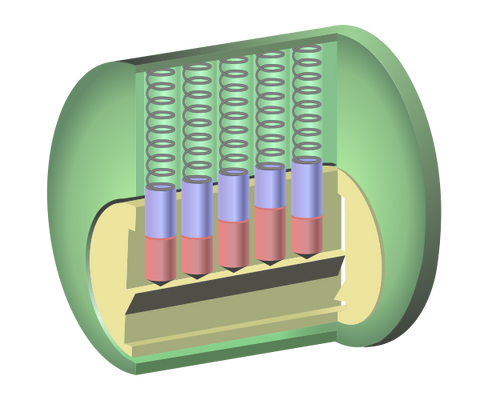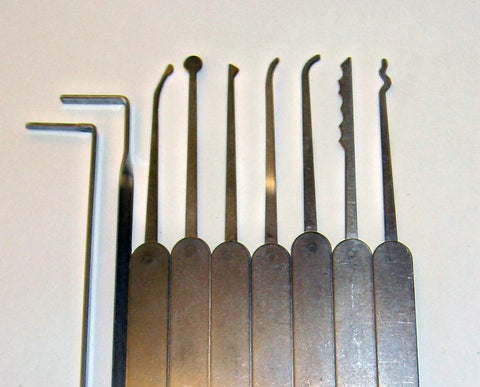Although some locks can be incredibly tricky to pick, the fundamentals of picking a basic pin-tumbler lock are fairly simple. The key to success, and eventually speed, is practice. With the exception of clear trainer locks (which are a great investment as you are building your lock picking skills), you’re not going to be able to see what you’re doing when you pick a lock. You’ll have to rely solely on tactile feedback, so the key to training your hands is repetition.
1. Obtain Your Lock
First, there are two basic rules to picking locks with integrity. The first is that you must not pick a lock that is in use. The second rule is that you may only pick locks that belong to you, or for which you have been given express permission to pick from the owner of the lock. Following these rules will ensure that you don’t venture into the realm of illegal activity, and should you choose to join a locksport organization it will keep you in good standing.
These instructions are for picking a basic pin tumbler lock. As mentioned above, a clear practice lock is an excellent choice to allow you to get a visual of the lock components and what is going on inside the lock as it’s picked. Once you’ve obtained your lock, ensure that it is clean and free of dirt or cracks. Older, worn, or dirty locks will be harder to pick and shouldn’t be attempted by beginners.

A pin tumbler lock with no key by Pbroks13 is licensed under CC BY-SA 3.0
2. Assemble Your Tools
Begin by assembling your basic lock picking tools. There are a wide variety of different picks available, but for beginning with a basic pin tumbler lock you will need only a tension wrench, a rake (or several rakes), and a hook pick.

“Lockpicks” by Ydam is licensed under CC BY-SA 3.0
3. Apply Tension
The application of tension to the lock plug mimics the tension of the key inside the lock. Tension is necessary to keep the driver pins in place once they’ve been moved above the shear line. Without the proper amount of tension, the pins will simply drop back down and prevent the plug from turning. To apply tension, insert the short end of the tension wrench into the bottom of the keyway with your non-dominant hand. Gently turn the tension wrench in the direction in which you would turn the key to open the lock. Turning the tension wrench in the wrong direction will prevent the lock from opening.
4. Rake the Pins
Begin with your rake tool. The rake is intended to quickly bump the pins up the shear line without the need for individual picking. To use the rake, insert it quickly into the keyway and scrub it back and forth with a motion not unlike toothbrushing. Continue to apply tension with the tension wrench the entire time. You will feel the plug give a bit as the pins align above the shear line, and if by chance you are able to move all the pins with only the rake, the lock will eventually turn completely.
There are many different shapes and styles of rakes available. If the first rake you try doesn’t catch all the pins, try a different one. Don’t forget to maintain tension in the keyway as you switch picks. If the tension is released before the lock is opened, you will have to start over.

“Rake lock picks” by Willh26 is licensed under CC BY-SA 4.0
5. Pick Individual Pins
There may sometimes be stubborn pins that do not respond to raking. These will have to be picked individually. A common pick for this purpose is a hook pick. While maintaining tension with the wrench, insert the hook into the keyway and feel for pins that have yet to be engaged at the shear line. If there are multiple pins remaining, one will be less “springy” than the others. This is called the binding pin, and it should be engaged first. Using the hook, push the pin upwards until it clicks into place and remains above the shear line. Then feel with your pick for the next binding pin. Continue in this fashion until the remainder of the pins have been set. This requires you to pay close attention to the tactile feedback you’re receiving through the pick, since you won’t be able to see what’s going on.
6. Turn the Lock
As you continue to apply tension in the direction that the key unlocks, the plug will give a little more and more with each pin set. Once all the pins have been set, maintain tension and continue to turn the wrench in the correct direction until the lock opens.
Need a simple lock pick set? Check out our urban survival gear for light, compact options.

